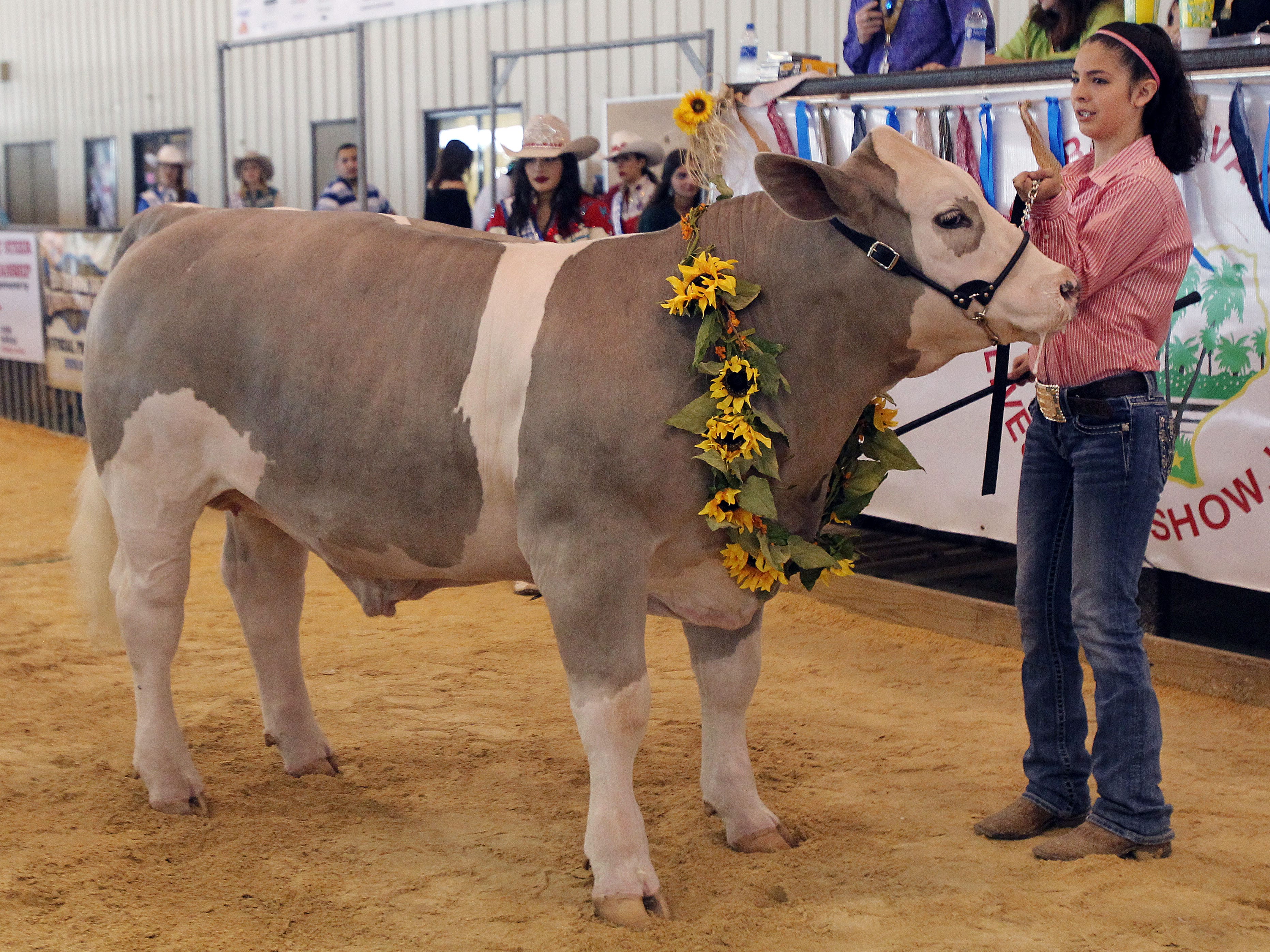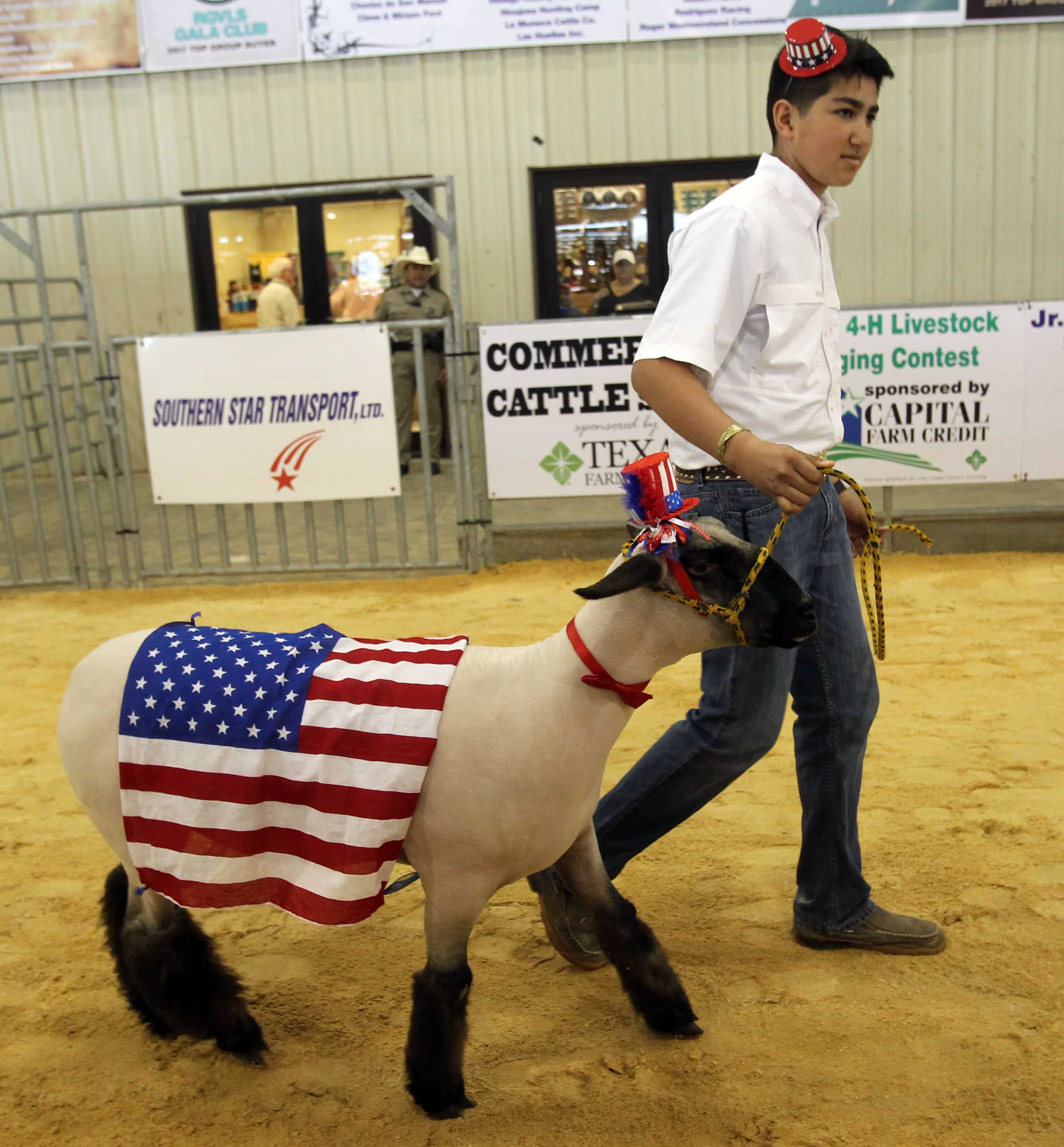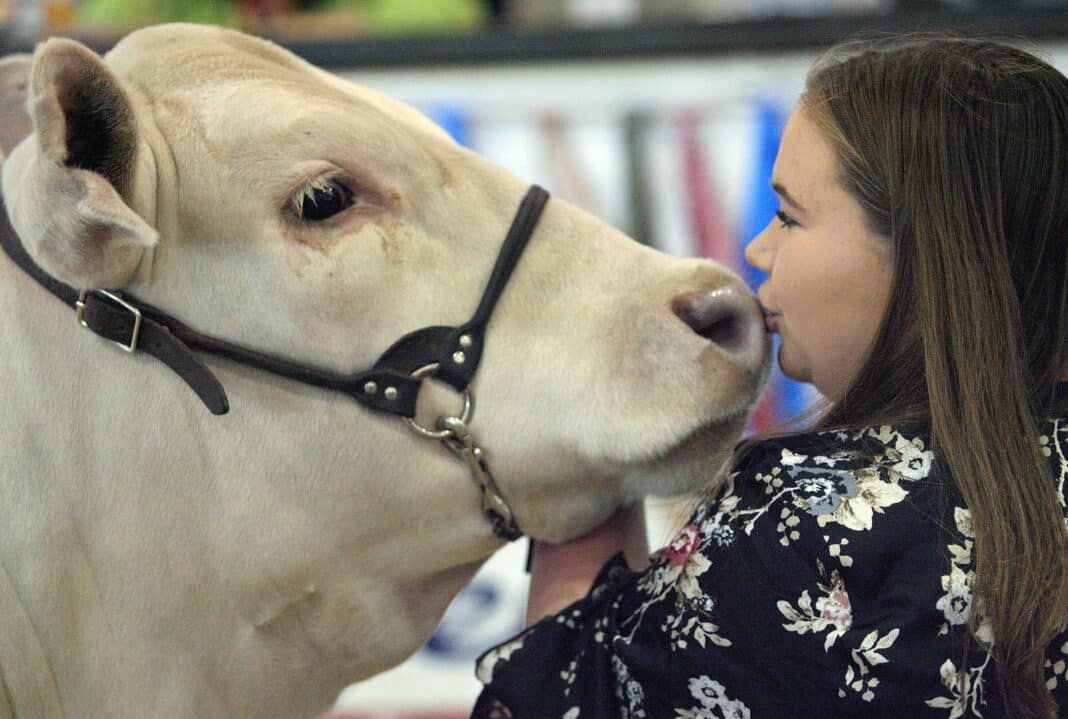Despite the continuing COVID-19 pandemic, the 83rd Annual Rio Grande Valley Livestock Show will go on this year, just without the normal fanfare and without the public.
As in years past, hundreds of student exhibitors are gearing up to show their farm animals in competition at the sprawling livestock showgrounds in Mercedes. But gone will be the midway carnival, the bucking broncs and bulls of the rodeo, and the throngs of Valley visitors.
That’s according to Mike Risica, president of the livestock show’s board of directors.
“This is the first time in the history (of the stock show) that we’re not gonna be able to allow the public,” Risica said Friday.
“And we’re really sad about that, but we feel, for the safety of the people in the Valley, that’s the best thing,” he said.
Instead, competition will begin Wednesday and will continue through March 20. Student exhibitors will be allowed to purchase up to four wristbands so that members of their family can watch them compete, Risica said.
There will also be a limited number of food vendors on site to feed the 4,000-5,000 people organizers expect will attend.
To put that in perspective, the livestock show normally hosts more than 300,000 people over the two-week course of the March event.
This isn’t the first time the show has been impacted by the COVID-19 pandemic. Last year, the much anticipated event became one of the first social function casualties as the virus first began to trickle through the state in the spring.
Early on, officials didn’t think the virus would affect the show, even after COVID-19 concerns forced the cancellation of the state’s biggest livestock competition in Houston just weeks before the Mercedes event was set to begin.
Last year’s stock show got started as normal — almost. Scattered among the showgrounds were new hand sanitizing stations. And additional staff was brought in to increase cleaning regimens in high traffic areas.

Officials hoped the measures would be enough to keep things going.
But as the virus’ spread continued to inch southward last March, it wasn’t long before Hidalgo County officials tamped down on largescale public gatherings. By March 16, the prohibitions against gatherings had shut the show down, midway through its run.
This year, though community spread of the virus remains a concern, and the number of new positives remains high, officials now have more tools in their arsenal against the disease.
A year in, so much more is known about the virus. Three vaccines now exist and are slowly being distributed. Treatments for severe illness have also advanced.
And most recently, Gov. Greg Abbott has lifted all COVID-19 restrictions, effective this Wednesday — just in time for the stock show.
But the planning for this year’s show got underway months ago — as long ago as June, according to Tony Garza, an agricultural science teacher from Edinburg North High School.
June is when Garza said he and his students first began to receive word that the show would, indeed, go on.
And the news couldn’t come at a more perfect time.
“Steers have to be validated in June, which means they’ve gotta get an ear tag and they have to get a special number from the state of Texas issued to them,” Garza said, referring to market cattle that exhibitors plan on showing the following March.
However, June was also when the pandemic began to rage at its worst in the Valley.
It was over the summer that hospitalizations and ICU admissions here skyrocketed — so much so that Abbott deployed the Texas military, as well as ambulance units to the Valley from around the state.
Hundreds of traveling healthcare workers also descended onto the region to help shore up staffing at hospitals that were sagging under the crush of severely ill patients.

So, though ag teachers around the Valley began to prepare their students for competition, they did so with caution as things remained uncertain, Garza said.
“One of the things we did have to explain to our parents is that, just because you’re buying a steer and raising a steer didn’t mean there was going to be a livestock show,” he said.
“It was a risk that they were going to take,” Garza said.
Buying and raising an animal for 10 months is an expensive proposition when a student is unsure if they’ll be able to compete and subsequently sell that animal.
“Some people, they go way above market value on an animal. Some people will pay up to about $5,000 for a steer… for the people that can afford that,” Garza said.
Ultimately, not everyone chose to take the risk.
Garza said he normally has 50 to 60 students who participate in the livestock show. This year, that number is down to 25 to 30 kids, he said.
Meanwhile, Risica is confident the scaled down show will be a success. And once the competition wraps up, organizers will turn their attention to their next big event: the PRCA rodeo and midway carnival.
Though the livestock competition is being limited to exhibitors only, Risica and the rest of the board of directors think the Valley — and the COVID-19 outlook — will be ready for some of the stock show’s traditional entertainment come May.
To that end, they’ve booked entertainment and planned on having rodeo competitors ready to perform two months from now. It’s one way organizers hope to give back to the Valley community that has so well supported them over the last eight decades.
“They Valley’s been so good about helping us out, and true blue to us,” Risica said. “So we knew that when we did open up, it was probably gonna be a blowout because people are gonna wanna come out to see the rodeo, wanna get to the carnival, wanna eat some food,” he said.
If things proceed as planned, the belated rodeo and carnival will be one of the first largescale events to return since the pandemic struck.
“We’re really excited. We are cautiously optimistic, but I think that it’s gonna happen,” Risica said.
“And hopefully the majority will be vaccinated, and hopefully people will be excited to come out.”





